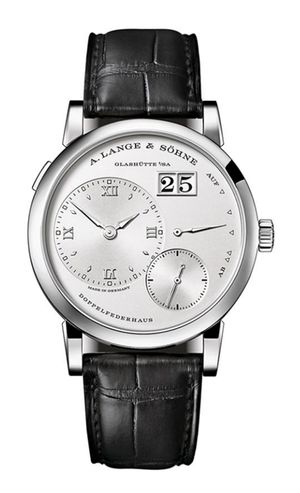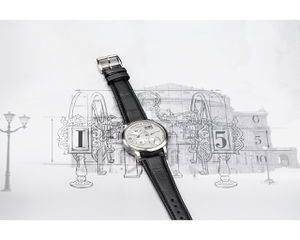Mythos and inspiration: Unterschied zwischen den Versionen
| Zeile 7: | Zeile 7: | ||
Some ideas are so persuasive that they can survive catastrophes and retain their fascination even 175 years after they premiered. One of them is the five-minute clock in the Semper Opera House that displays the time digitally. Aloft over the stage, it indicates the time in an artistically framed double aperture: the hours in Roman numerals on the left, the minutes – in intervals of five – in Arabic numerals on the right. Every evening, the operagoers wait patiently for the minute display to switch from 55 to the blank white field, because the performances always begin at the top of the hour. | Some ideas are so persuasive that they can survive catastrophes and retain their fascination even 175 years after they premiered. One of them is the five-minute clock in the Semper Opera House that displays the time digitally. Aloft over the stage, it indicates the time in an artistically framed double aperture: the hours in Roman numerals on the left, the minutes – in intervals of five – in Arabic numerals on the right. Every evening, the operagoers wait patiently for the minute display to switch from 55 to the blank white field, because the performances always begin at the top of the hour. | ||
| + | |||
| + | When the Royal Court Theatre was inaugurated in 1841, this technical marvel was considered a sensation, and, for its inventor, Johann Christian Friedrich Gutkaes, it resulted in his appointment to court clockmaker. Together with his employee Ferdinand Adolph Lange, Gutkaes completed the exceptionally large tower clockwork with two counter-rotating wheels and installed it at a height of 20 metres above the stage. Only 28 years later, the opera house and the clock were destroyed in a blaze. For the new building, dedicated in 1878, Gutkaes’ former employee Ludwig Teubner created a new stage clock modelled along the lines of the original. When the Semper Opera House – again destroyed in World War II – was inaugurated for the third time in 1985, the clock, with its characteristic double aperture, presented itself to the audience where it had always been: high above the centre of the stage. | ||
Version vom 24. Februar 2016, 01:26 Uhr
The new LANGE 1 in white gold is just around the corner
Glashütte, February 2016
The LANGE 1 owes its recognition to the asymmetric dial design and the prominent Lange outsize date. It was inspired by the five-minute clock in the Dresden Semper Opera House, which, for 175 years, has been a hallmark of the world-famous operatic venue.
Some ideas are so persuasive that they can survive catastrophes and retain their fascination even 175 years after they premiered. One of them is the five-minute clock in the Semper Opera House that displays the time digitally. Aloft over the stage, it indicates the time in an artistically framed double aperture: the hours in Roman numerals on the left, the minutes – in intervals of five – in Arabic numerals on the right. Every evening, the operagoers wait patiently for the minute display to switch from 55 to the blank white field, because the performances always begin at the top of the hour.
When the Royal Court Theatre was inaugurated in 1841, this technical marvel was considered a sensation, and, for its inventor, Johann Christian Friedrich Gutkaes, it resulted in his appointment to court clockmaker. Together with his employee Ferdinand Adolph Lange, Gutkaes completed the exceptionally large tower clockwork with two counter-rotating wheels and installed it at a height of 20 metres above the stage. Only 28 years later, the opera house and the clock were destroyed in a blaze. For the new building, dedicated in 1878, Gutkaes’ former employee Ludwig Teubner created a new stage clock modelled along the lines of the original. When the Semper Opera House – again destroyed in World War II – was inaugurated for the third time in 1985, the clock, with its characteristic double aperture, presented itself to the audience where it had always been: high above the centre of the stage.

